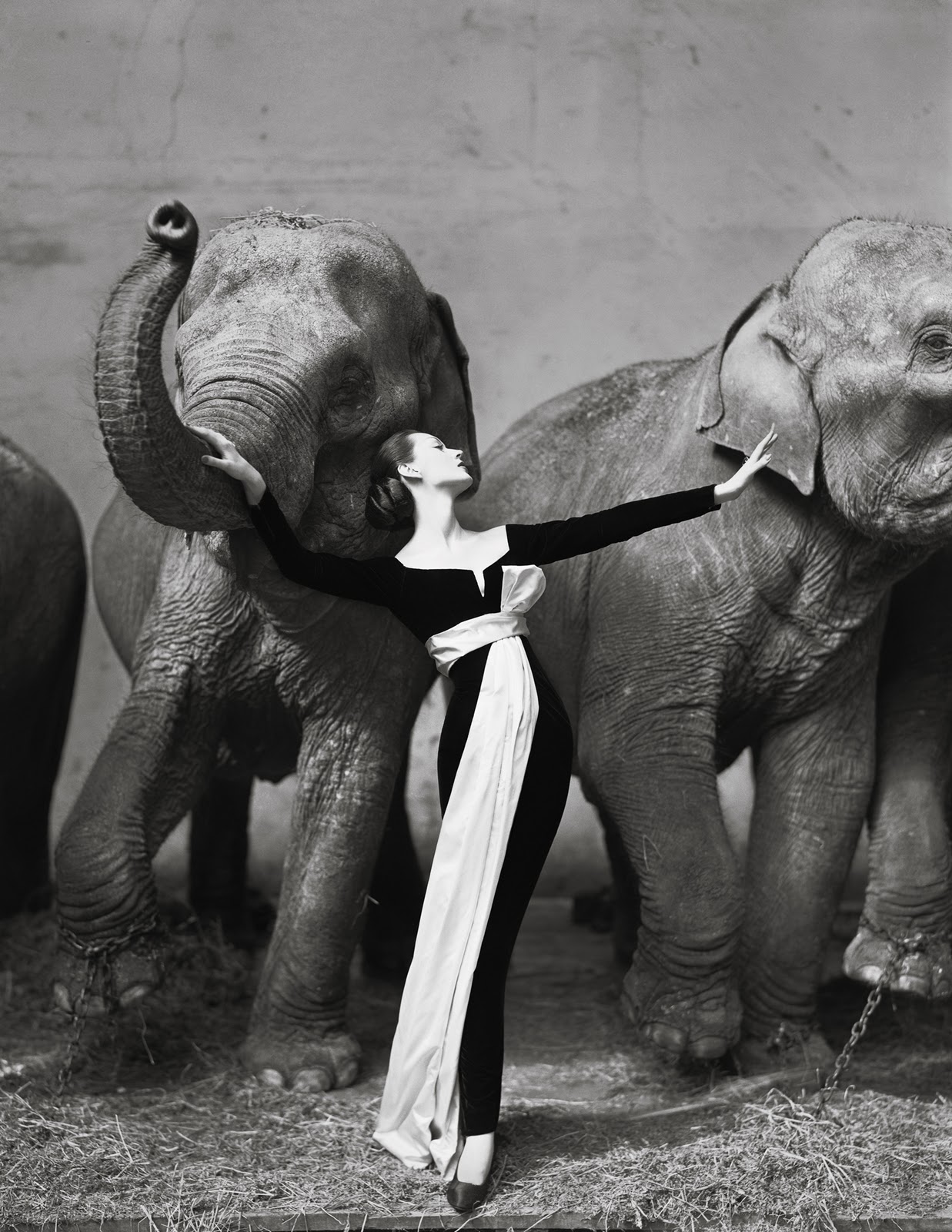 From Winthrop Sargeant’s 1958 New Yorker profile of a young Richard Avedon, who used his camera to reimagine the fashion photograph, which lacked blithe spirit before he enlivened the scene:
From Winthrop Sargeant’s 1958 New Yorker profile of a young Richard Avedon, who used his camera to reimagine the fashion photograph, which lacked blithe spirit before he enlivened the scene:
About twelve years ago, this approach to fashion photography began to be subtly undermined by a sprightly and ingenious photographer for Harper’s Bazaar named Richard Avedon. As far as he was concerned, the statues and mummies went out the window. The model became pretty, rather than austerely aloof. She laughed, danced, skated, gambolled among herds of elephants, sang in the rain, ran breathlessly down the Champs-Elysées, smiled and sipped cognac at café tables, and otherwise gave evidence of being human. Whether she thereby sold more clothes is open to question. But the new trend certainly brightened the page of Harper’s Bazaar, and Avedon was widely conceded to have reached a previously unattained artistic level in fashion photography. A good deal of this accomplishment can be attributed to his imagination and resourcefulness in handling a camera, but some of it undoubtedly stems from the fact that his primary interest is not in fashion but in women.
The Avedon photograph—or, more broadly, the Avedon photographic style—has by now become a lively contribution to the visual poetry of sophisticated urban life. Nearly everybody is familiar with it, for it has long since overflowed the pages of Harper’s Bazaar and influenced the advertising in most of the slick-paper periodicals. It has been imitated by other photographers, but the imitations have seldom approached the animation of the originals; in any case, as soon as the imitators have mastered at least the surface elements of one of Avedon’s innovations, he has always popped up with some entirely new departure, for he has never been one to stand still. The world he depicts is an artificial one; his polished and rather romantic art flatly contradicts the bromide that the camera never lies. Avedon’s camera unquestionably lies, but it does so in such a poetic and ingratiating manner that the photographic fiction it produces has become a sort of folklore of the world in which fashionable elegance counts. The characters in this fiction are women of unbelievable beauty and grace, moving about in an environment that exists largely in the imagination. This is a composite of mists, glowing lights, the moods of nocturnal revellers, nostalgic memories of bars and gaming tables and theatres, and such ephemeral minutiae as the feeling of enchantment at the sight of a taxi in the rain whose door is opened to receive a suave and mysterious beauty, or the moment of gaiety when some lovely girl decides to throw dignity aside, or the magical second in which the casual motions of a beautiful woman are observed secretly across a restaurant table—all fragments of a metropolitan fairyland, glimpsed by ordinary mortals only at times of heightened illusion.•
_______________________________
In 1999, Avedon is interviewed by that agreeable robot Charlie Rose.
Tags: Richard Avedon, Winthrop Sargeant
